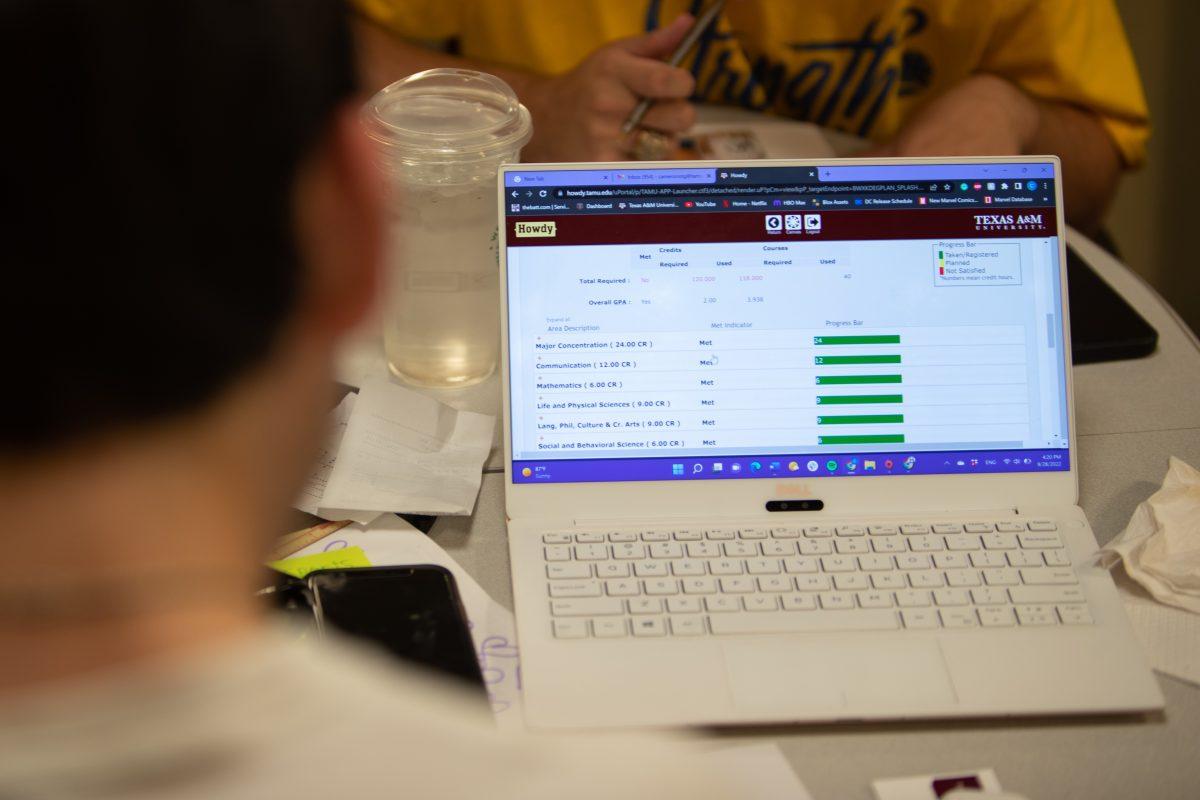Don’t let creating a degree plan stress you out. Instead, use it to make your life easier.
Undergraduate degree plans are due in the Howdy portal on Sept. 30, according to the Texas A&M academic calendar. The degree plan is annual, and those who do not have an approved degree plan could have a registration hold, which prevents students from registering. Although intimidating, there is a wide range of resources at A&M to help students navigate their planners. While students should mostly rely on their academic advisers, they can also reach out to fellow students who have experience with degree plans and Academic Peer Mentors, or APMs, for help.
Juan Lopez, Ph.D., is the sole academic adviser for the Human Resource Development Department and said the degree planner helps guide students through the classes they need to take before graduation.
“I call it a blueprint for your graduation requirements,” Lopez said. “It allows the student to be able to be prepared for the next semester, and every major has a different process.”
The planner ensures that students don’t encounter as many issues as they register for classes, but Lopez said students shouldn’t try and pack all of their classes into fewer semesters.
“This is not a sprint. This is a marathon,” Lopez said. “It won’t do you any service if you rush your degree just to finish on time and save a few bucks. Make the most out of your experience.”
Lopez said there are great resources available to students who need help with their degree planner, including professors, upperclassmen and academic advisers.
“Do your homework on your degree plans and don’t be afraid to use your resources,” Lopez said. “[Academic advisers] are here to make sure students are successful in their higher education.”
Visualization junior Patrick Curoe is currently filling out his degree plan and has done it before , but still has difficulty figuring out the order of classes.
“Some majors, mine included, have classes that are a prerequisite to another class,” Curoe said. “You have to plan that accordingly so you’re able to graduate on time.”
Previously, Curoe said he used resources to write down which classes he needed for his major and classes he was interested in that fulfill credit requirements.
“I like to write things down, so I used resources like Google Sheets and the advising department,” Curoe said.
Overall, Curoe said the best things to do when creating a degree planner is to avoid stress, remember deadlines and stay flexible.
“It’s not going to stay the same throughout your college career, but it’s definitely a good baseline,” Curoe said. “Just make sure you know when things are due so that you can get on top of those classes that you need.”
Biology sophomore Josseline Martinez is an APM and said they can mostly assist in degree planners.
“We can help you look at a degree planner and give some general information,” Martinez said. “But if you’re looking for more specific help, an academic adviser would be better.”
Martinez said, for her own degree plan, she used her Regent scholarship adviser and mentors for help.
“My Regent scholarship adviser had great insights, like how a lot of students prefer to take BIOL 214 before BIOL 213,” Martinez said. “I asked around a lot.”
Asking students in a similar major is a huge resource because they have hands-on experiences in those classes, Martinez said.
“Definitely ask for help, especially from those who have the same major,” Martinez said. “They’ve gone through the classes before, and they know what would benefit others in terms of which classes to take first.”










